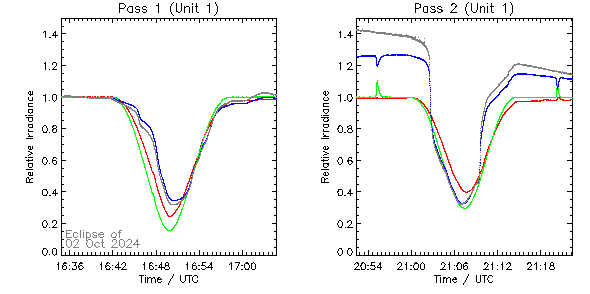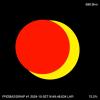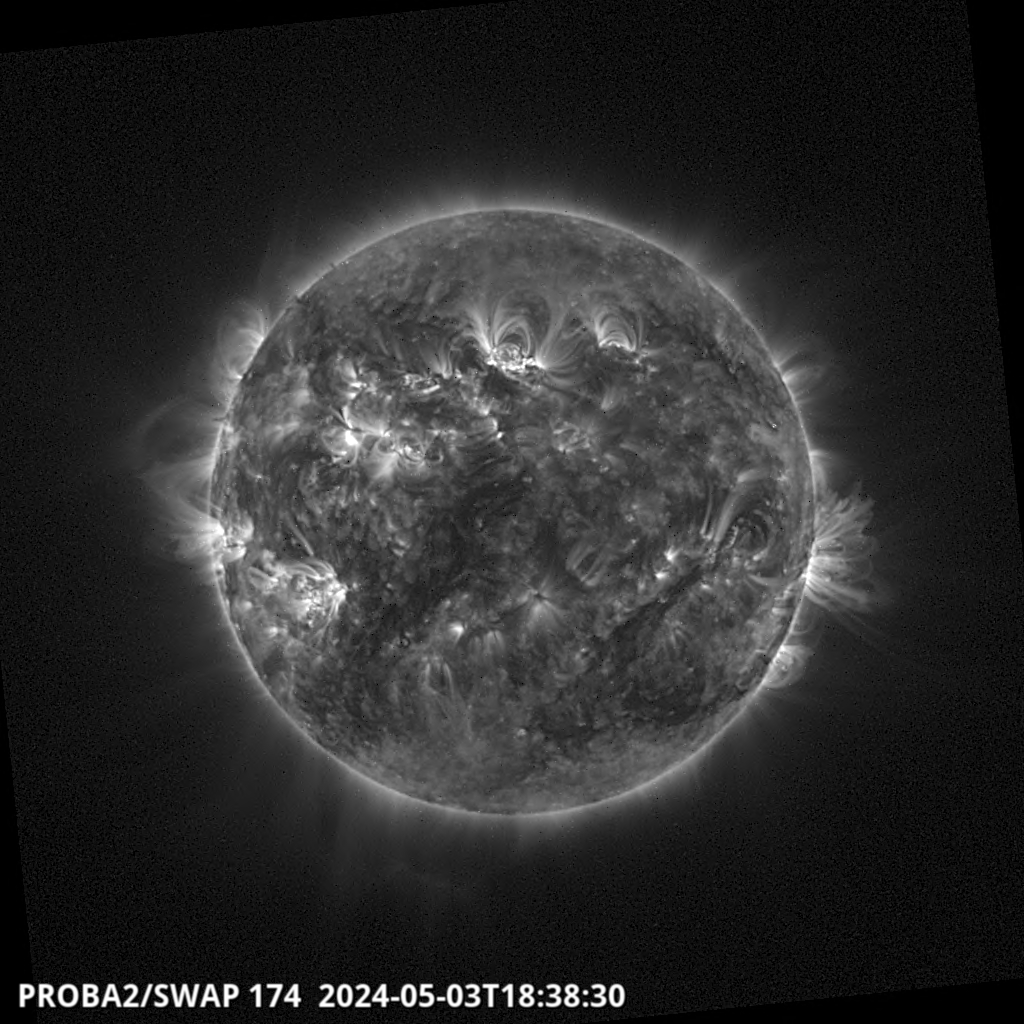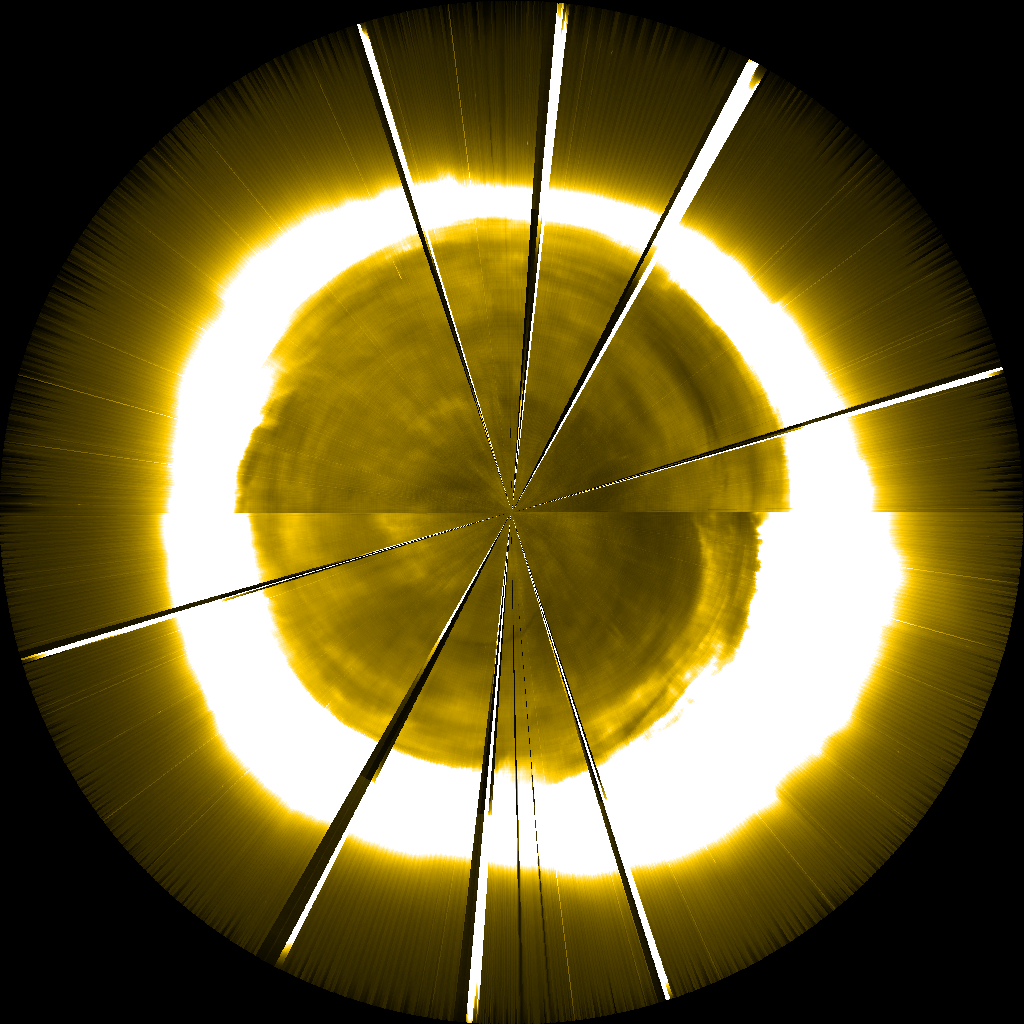Main menu
You are here
The October 2 solar eclipse
Wed, 09/25/2024 - 18:44 — Elke D'Huys

After all the excitement surrounding the Great American Eclipse earlier this year, it is easy to forget that another one of these mesmerising events was scheduled for the fall. This second eclipse of the year was an annular one (as observed from ground), which is even more rare than a regular (partial) eclipse. During an annular eclipse, the Moon is further from Earth in its orbit and thus appears smaller than during a total solar eclipse. As a result it can not cover the complete solar disk. We observe a ring (an annulus) of bright sunlight surrounding the Moon.
The October 2 annular eclipse was difficult to observe from ground. Its shadow passed over the very tip of South America, so only observers in Chile and Argentina were able to enjoy this spectacle. Larger parts of South America and even New Zealand could observe a partial eclipse with various degrees of occultation.
PROBA2, on the other hand, again profited from its fast sun-sunchronous orbit to observe the event multiple times. The Moon passed 5 times in the field-of-view of the SWAP instrument, of which 3 transits obscured at least part of the solar disk. Also LYRA observed these three occultations. Two covered a significant part of the solar disk, obscuring up to 75% and 62% of the solar surface.
Click on the simulation and image below to see movies of the expected view and the observations of the eclipse from the SWAP telescope.
At the times of the PROBA2 eclipses, LYRA and SWAP took their usual eclipse observations.
LYRA observations
As for all eclipses, LYRA activated one of its backup units, which acquires in parallel with the nominal unit. The instrument monitors the progressive extinction of the solar light in its channels that we observe in the ultraviolet (red and green curves) and extreme ultraviolet (black and blue curves). The signal extinction caused by the Moon passing in front of the Sun, as observed across the four channels of the backup unit, is presented below. During the second passage, this extinction occurred while the Sun was recovering from an eruption, which explains the overall decrease in signal observed before and after the eclipse in two of the LYRA channels (blue and black). LYRA observations are available in the event directory.

SWAP observations
We made high cadence observations of the occultations with SWAP and produced our typical sets of calibrated PNG images (with logos and timestamp, with timestamp only, and without logos or timestamp), as well as movies of the event. Unfortunately, the observations were impacted by the passage of PROBA2 through the South Atlantic Anomaly (SAA), which causes particle impacts (white dots) in the images.
All movies and images of the eclipse are collected in dedicated directories on our  website. The event directory also contains a specially selected SWAP image to promote the eclipse. This is the image with the largest part of the Sun occulted by the Moon.
website. The event directory also contains a specially selected SWAP image to promote the eclipse. This is the image with the largest part of the Sun occulted by the Moon.
Data Use Policy
All PROBA2 images and movies used in outreach and the media should be credited to "ESA/ROB". Additional information about the terms of use for PROBA2 data is available on the PROBA2 website.
Contacting the PROBA2 Team
All requests for media comments, data assistance, or planning requests can be directed to the SWAP and LYRA teams via swap-lyra@lists.observatory.be .









